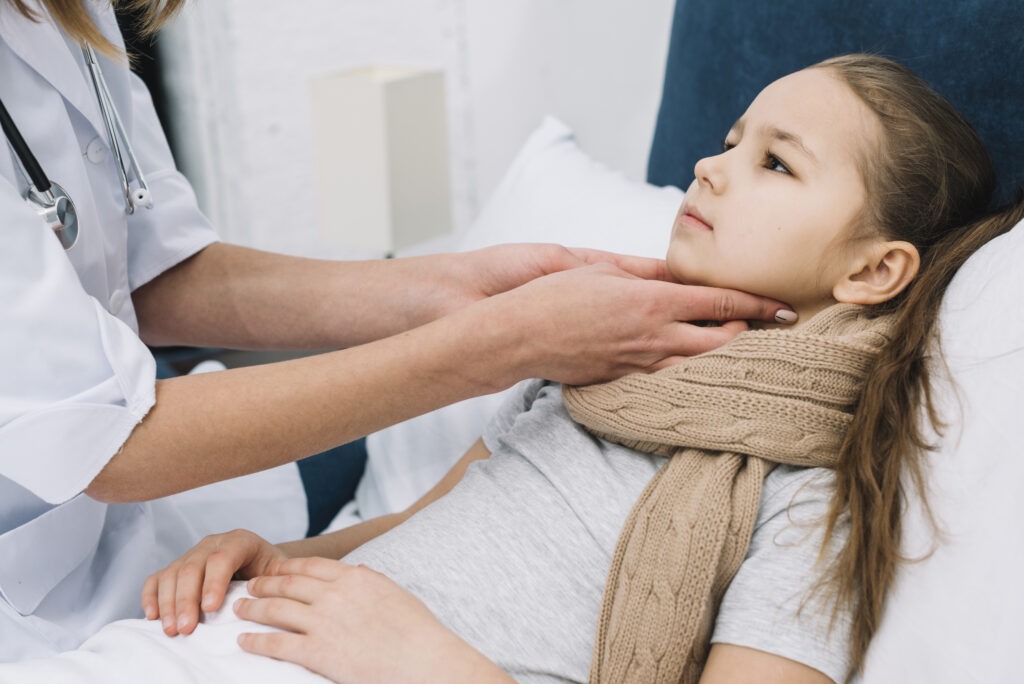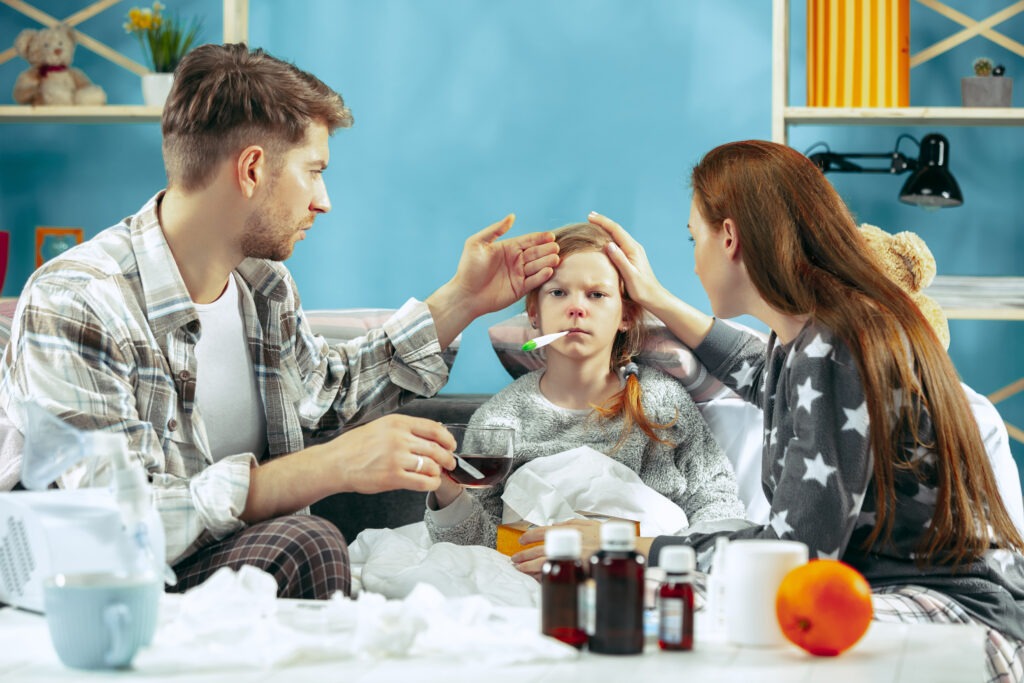As of 7th December 2022, at least 15 children in the UK have died from a Strep A infection amid the rise in cases. The recent outbreak has also caused a surge in Scarlet Fever with 851 reported cases so far, which is a drastic amount compared to last year’s 186 cases.
But what exactly is Strep A? What are the signs that parents should look out for and what should they do if they suspect their child has Strep A?
Find out the answers in this blog as well as further information about Strep A.
Streptococcus is a common type of bacteria that is typically found on the throat, nose, and skin. The bacteria may not cause any symptoms or, if it does, they are usually mild and can be easily treated.
Some of the common Strep A symptoms include:
– High temperature
– Swollen glands
– Sandpaper-like rash (Scarlet Fever)
– Muscle aches
– Vomiting
– Swelling (Cellulitis)
– Sore throat (Strep Throat or Tonsillitis)
– Nausea
– Scabs (Impetigo)
The above symptoms can usually be effectively treated with antibiotics.

Streptococcus is spread from person to person via coughing, sneezing, and other bodily fluids. The bacteria can also be spread if a person comes into contact with an infected wound.
As previously mentioned, some people may have Strep A but they remain symptomless; however, they can still pass the bacteria onto other people, which is more likely to happen if they are ill.

Strep A can cause other infections. For example, an infected person may suffer from Necrotizing Fasciitis (also known as “a flesh-eating bacteria”) or Streptococcal Toxic Shock Syndrome (STSS).
Some other infections that can be caused by Strep A are as follows:
– Tonsillitis – Tonsils become swollen.
– Pharyngitis – Pharynx becomes inflamed.
– Scarlet fever – Rash and sore throat occur.
– Impetigo – Scabs and sores occur on the skin, typically around the mouth.
– Cellulitis – Pain and swelling of a particular area.
– Skin and tissue infections
Some people may experience complications after having Strep A, such as Rheumatic Fever and Glomerulonephritis.
If Streptococcus gets into parts of the body where it is not usually found, such as the bloodstream, lungs, or deep muscles, then it can lead to the individual catching invasive Group A Strep (iGAS). In some cases, iGAS can even be fatal.
There are two severe forms of iGAS: Necrotizing Fasciitis (a muscle and fat tissue infection) and Streptococcal Toxic Shock Syndrome (STSS).
Streptococcal Toxic Shock Syndrome (STSS) is an infection that causes low blood pressure and injury to organs, such as the kidneys, lungs, and liver.
STSS is rarely contagious; however, for the infected, it can lead to death.
The early signs of STSS include:
– Fever
– Muscle aches
– Vomiting
– Nausea
– Dizziness
Streptococcal Toxic Shock Syndrome is most common in adults aged over 65.

If caught early, a person who has Strep A can be effectively treated with a course of antibiotics, such as Penicillin or Amoxicillin.
Typically, an infected person should begin to feel better within 48 hours of starting their antibiotics. If the antibiotics do not seem to be working, then the infected should call a doctor immediately.
Although there has been an increase in children catching Group A Strep, there is no evidence at present to show that a new strain of the infection is circulating.
However, the lack of exposure to Strep A during the Covid-19 lockdowns could be the reason for young children’s lack of immunity against the bacteria.
Parents are advised to be vigilant when it comes to their child’s health. The symptoms of Strep A can start mild, so parents need to know what to look for to catch the infection early and to help ensure fast and effective treatment for their child,
A child infected with Strep A may experience the following:
– Sore throat
– Fever-like symptoms
– Red and swollen tonsils
– Muscle aches
Parents should also be concerned if their baby/child:
– Is eating less
– Has a dry nappy for longer than 12 hours or shows other signs of dehydration
– Has a temperature of 38 degrees (for children under 3 months)
– Has a temperature of 39 degrees or higher (for children over 3 months)
– Is hot to touch or sweating
– Is very tired

If you suspect that your child is experiencing signs of Strep A, then contact your GP as soon as possible.
Your GP can arrange for tests to be done to ascertain whether Strep A bacteria is present. If Strep A is present, then the right course of treatment will be prescribed.
Antibiotics are not typically recommended as a preventative treatment; however, a GP may prescribe them to patients if needed.
Parents should keep an eye on any minor symptoms their child may be experiencing. They can contact their local pharmacy for advice.
Some treatments may effectively treat minor symptoms, such as Calcough Children’s Syrup.
However, parents should immediately call 999 if their child’s symptoms worsen (their child is struggling to breathe or is unable to stay awake).
To prevent Strep A from spreading, parents can do several things, such as:
– Practise good hygiene, such as washing hands regularly. Children should be encouraged to wash their hands for no less than 20 seconds using warm water and soap.
– Use a tissue to catch coughs and sneezes. Children should be encouraged to cover their mouths with a tissue when coughing or sneezing.
– Keep away from others when experiencing Strep A symptoms. Infected children and adults should remain at home until at least 24 hours after starting antibiotics.
– Clean and cover any open wounds.
If you or your child are showing symptoms of Strep A, then phone your GP or NHS 111 for advice on treatment.
However, if the symptoms are severe (breathing difficulties, blue lips and skin, and difficulty staying awake), phone 999 or visit your local emergency service.
The Travel Health Clinic offers a Strep A Self-Administered Test Kit that can be ordered online. The self-testing kit will detect if Streptococcus bacteria is present and results will be available within 5 minutes of testing.